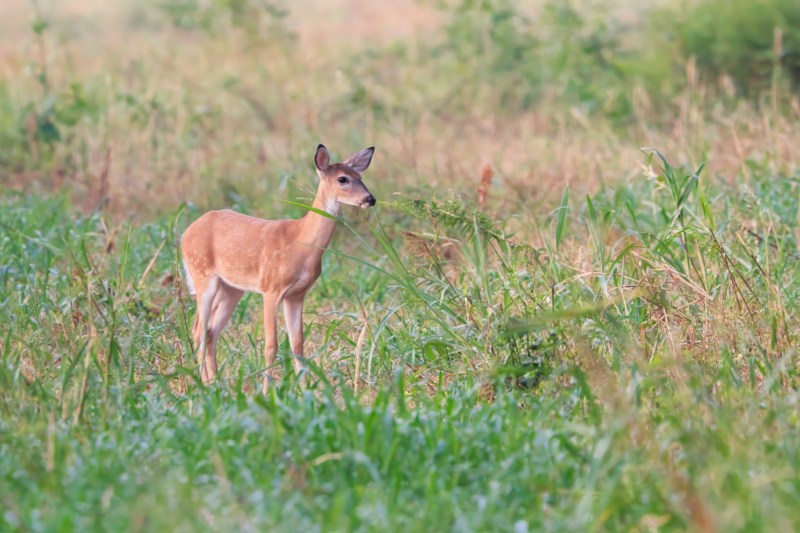On September 7, I was driving the far north side of the auto tour road located at the Sequoyah National Wildlife Refuge in Oklahoma. The area is also east of the Sally Jones Causeway. I spotted a beautiful White-tailed Doe and her Fawn on the edge of Dockery Field. The main thing I noticed about these two deer was that the Fawn’s spots were almost completely faded away.

This time of year, White-tailed Fawn spots start to disappear here in east central Oklahoma. The Fawns are born in late spring and early summer with white spots that help camouflage them in the dappled light of the forest. As they grow older and become more independent from their mothers, their spots fade until they are gone completely.

I was able to get some great photos of this Fawn, showing both sides where you can see the spots are faint now. I’ve included a couple of the photos here. I also took a couple of short videos that I shared on my TikTok account – you can check it out here [TikTok] and [TikTok].
It’s amazing to me how quickly these Fawns grow and change. Just a few short months ago this little one was brand new to the world. Now it’s becoming more independent and losing its baby camouflage. I feel lucky to have captured these images documenting the Fawn at this transitional stage of life. Let me know in the comments if you’ve noticed Fawn spot fading where you live! I’d love to hear when it starts in other parts of the country.
Steve Creek, Wildlife Photographer
Equipment Used:
- Camera: Canon EOS R5
- Lens: Canon RF 100-500 mm F4.5-7.1 L IS USM
Technical Details: First Photo
- Location: Sequoyah National Wildlife Refuge (Oklahoma)
- Date and Time Taken: September 7, 2023 (07:31 A. M.)
- Program Mode: Manual
- Aperture: f7.1
- Shutter speed: 1/640
- ISO: 6400 (Auto)
- Exp. Comp.: +0.7
- Focal Length: 500 mm
